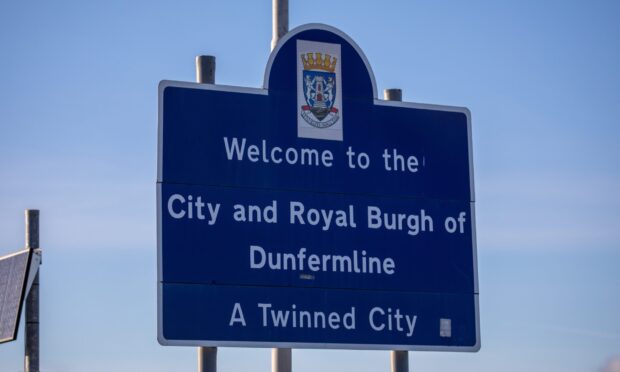There could be no doubting I had reached the RSPB’s Fowlsheugh seabird reserve. The reserve, at Crawton between Catterline and Stonehaven, is aptly named – Fowlsheugh means bird cliff. It’s not the squalling voices of seabirds that greets you, as you might expect, but the powerful, fishy smell of generations of seabird guano coating the high cliffs where the birds nest.
I was welcomed by a meadow pipit sitting on a fencing post. I like to think it was a cock bird keeping guard over a hen sitting on eggs in a nest tucked out of sight amongst the undergrowth. It flicked its tail and flew ahead of me, encouraging me away from its nest. When it could be sure I no longer posed any danger it flew in a wide circle back to its sentry post.
It’s the sharp cries of kittiwakes you hear first as you walk up the short climb onto the clifftop, then the guttural grunts and hoots of guillemots and razorbills float up from the cliff face where the birds have come on land to breed. These three species effectively spend their lives at sea with the exception of the months of May and June which is their breeding season.
It’s an opportunity to see the seabirds close to for some nest just below the lip of the cliffs. The birds crowd onto the cliffs, shoulder to shoulder on the narrow ledges, uttering growling cries as if warning their neighbours to give them more room. Rafts of the birds mill about in the sea at the foot of the cliffs.
Guillemots and razorbills are expert underwater swimmers and I watched them dive below the surface and swim down to hunt for sand eels until the depth of the water hid them from sight.
An unexpected find was the corpse of a very newly born leveret lying by a path. Another surprise was a second wee body lying close by beneath a gorse bush. One had a puncture to the back of the neck, the other had a bite to the windpipe. I’ve never seen leverets so young and while it seemed sad that their short lives should be brought to such an abrupt and violent end – it is nature’s way.
Half hidden by the gorse was the entrance to a tunnel which, with the method of killing, pointed to a weasel being the likely predator. Had I, or an earlier walker, disturbed it before it could drag its prey underground?
In the absence of suitable nesting sites in old walls or amongst tree roots weasels often take over the tunnels of prey which they have hunted and killed, such as voles, for their breeding chambers. To test my weasel theory I popped one of the dead leverets into the mouth of the tunnel. When I came back an hour later it had gone. Was it being fed to a nest of weaning kits? I can’t know for certain but the time of year and the circumstantial evidence all seemed right.
Rabbits rest and procreate underground and newborn rabbits are hairless, blind and helpless. By contrast, hares live all their lives above ground exposed to the elements and their leverets are born in a shallow form – locally, a flap – fully furred and with their eyes open. They are pretty much helpless too – certainly against as ferocious a predator as a weasel.
There was so much heat in the sun I had to take off my sweater. Not every day is so good. The low vegetation on the exposed clifftop site reflects how desolate it can be in the winter gales.
The hardy gorse survives in the unkindest conditions. Thrift, or sea pinks, cling to the cliffs, shivering in the breeze on stiff, skinny stalks rooted in the dry, arid crevasses. Readers of a certain age will remember that thrift was depicted on the reverse side of the old ‘thrifty’ thruppenny-bit coin.
Little bird’s-foot trefoil was coming into flower, its red-streaked petals starting to open. White common scurvy grass was, well – common. It’s widespread there. Pink campion in full bloom and orange-gold lichen carpeting the rocks added splashes of colour. I believe the lichen is known commonly as sunburst lichen, but perhaps there’s a reader who can confirm this.
Opportunist carrion crows patrolled the cliffs ready to pounce on whatever the scavenging gulls had missed. A kestrel flew fast-winged over the lip of the cliff and disappeared inland. They are probably more associated with woodlands and fields and motorway verges but they are widespread and frequent coastal cliffs and anywhere they can find their principal diet of small mammals and insects.
I might have hoped to hear more from the skylarks but while they are busy feeding their young there’s less time for song. Otherwise it was an altogether successful outing.
And as I got close to the exit gate I was joined by a meadow pipit.
Apart from the ground-nesting song birds at Fowlsheugh there are also ground-nesting herring gulls so, until the nesting has finished – best no dogs!










